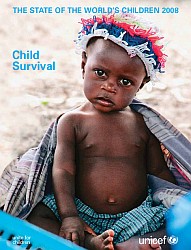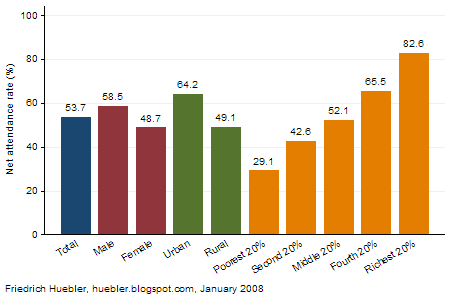 UNICEF released the 2008 edition of its annual publication The State of the World's Children on 22 January 2008. This year's report is dedicated to child survival and primary health care for children and their mothers.
UNICEF released the 2008 edition of its annual publication The State of the World's Children on 22 January 2008. This year's report is dedicated to child survival and primary health care for children and their mothers.In 2006, 9.7 million children died before they reached their fifth birthday. In spite of improvements in the area of child survival, the world is not on track to reach the Millennium Development Goal of reducing the rate of child mortality by two thirds between 1990 and 2015.
The State of the World's Children contains statistical tables with national data on nutrition, health, HIV and AIDS, education, demography, economy, women, and child protection. In the area of education, the report lists data for the following indicators:
- Primary school enrollment and attendance
- Secondary school enrollment and attendance
- Survival rate to grade 5
- Youth and adult literacy
External links
- The State of the World's Children 2008 official website
- Download The State of the World's Children 2008 (PDF, 4.3 MB)
- UN Millennium Development Goals
- The State of the World's Children 2009
- "The State of the World's Children 2007" by UNICEF: Gender disparity in primary and secondary school
- UNICEF statistical review: Progress for Children
Permanent URL: http://huebler.blogspot.com/2008/01/state-of-worlds-children-2008-by-unicef.html

